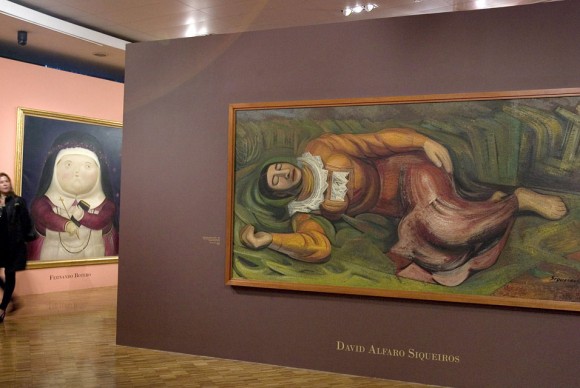Exhibition of Latin American Masters on View at the Museum of Modern Art in Mexico City
July 12, 2010 by All Art News
Filed under Art Events & Exhibitions, Featured
MEXICO CITY.- The term cannibalism, just like Oswaldo Andrade interprets it in 1928, becomes very useful when discussing Modern Art in Latin America. Inspire on the digestive system, Andrade proposed that local culture should devour and transform modern art lessons- mainly European- in order to articulate a regional proposal with its own significance. Even if a proper methodology for Latin American comes out form such proposal, it leaves aside the active role several Latin American artists played in the conformation of artistic discourses and practices, both, in Europe and United States throughout the XX century.
The exhibition proposes a lecture that, besides considering modern European art assimilation within the Latin American context, emphasizes several regional artists’ interference in shaping their artistic practices. It also aims to build relationships between works form different Latin American latitudes in order to underline formal order connections or relations among meanings, purposes and intentions.

A woman walks by an artwork (R), entitled Mujer Dormida, 1947, by Mexican artist David Alfaro Siqueiros (1896-1974) and an artwork (L), entitled Santa Rosa de Lima, 1977, by Colombian artist Fernando Botero during the opening of the exhibition 'Latitudes Maestros Latinoamericanos' (Latitudes Latin American Masters) at the Modern Art Museum of Mexico City, Mexico. The exhibition opens to the public until 20 September. EPA/ALEX CRUZ
Redefining visual arts from Post-Impressionism and Cubism
Many Latin American artists, who lived in Europe between the late nineteenth century and the early decades of the twentieth century, were attracted by the lessons of post-impressionism, symbolism, and, to some extent, Cubism and Expressionism. Upon their return, immersed in the avant-garde spirit, this group of artists and precursors shaped modern art in Latin America.
The Mexican muralism and its painting school
Muralism -The first vanguard of the twentieth century originated in a Latin American country with a continental impact-, was characterized by its figurative character and its nationalistic tone, at the service of an ideological discourse of identity. However, it lacked common aesthetic or stylistic precepts. This diversity is also significant in easel painting school that was developed jointly with Muralism in Mexico.
Surrealisms
Surrealism, as a group defined by a radical internationalism always open its flanks to include writers and artists from different geographies, including Latin America. Surrealism also went into exile in the American continent, as a result of the catastrophic events of World War II. In Latin American art, the echoes of this event, not only reported the emergence of abstraction in many regions of the continent, but also reinforced the gestural aspect, intimate and narrative of several Latin American schools.
Abstraction models: In-formalism, Geometrics, Constructivism, Kineticism…
Following the world war, many artists from Europe or settled there, debtors or participants of movements such as abstraction and constructivism, established in Latin America. This new cutting-edge breakthrough was an irreversible schism in Latin American art in the late 40s. In some cases, their influence hastened the disintegration of great narratives of official identity and gave way to new gestural languages, and more intimate discourses. In others, these influences endorsed the local progressive spirit, with a new art based on logic, constructive abstraction, and rationalization, more akin to modern utopia.
